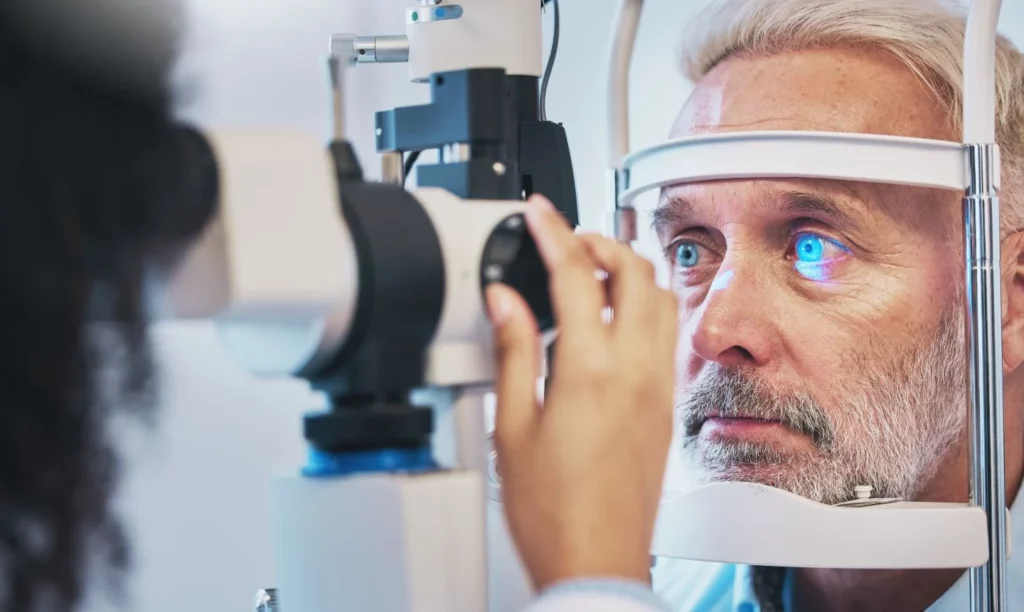Glaucoma is a complex and progressive eye condition that affects millions of people worldwide. It is characterized by increased pressure within the eye, which can damage the optic nerve and lead to vision loss if left untreated. While there are various treatment options available to manage glaucoma, surgery has become an essential component in improving patient outcomes. In recent years, there have been significant advancements in glaucoma surgery techniques and technologies that offer hope for better results and enhanced quality of life for patients.
Understanding Glaucoma: A Brief Overview
Before delving into the innovations in glaucoma surgery, it is essential to have a basic understanding of the condition itself. Glaucoma is often referred to as the “silent thief of sight” because it typically progresses slowly and without noticeable symptoms in its early stages. As a result, many individuals may not be aware that they have glaucoma until irreversible damage to their vision has occurred. It is crucial for individuals at risk, such as those with a family history of glaucoma or certain medical conditions, to undergo regular eye examinations to detect and manage the condition early.
The Impact of Glaucoma on Vision
When pressure within the eye increases, it can cause damage to the optic nerve, which is responsible for transmitting visual information from the retina to the brain. The gradual loss of nerve fibers leads to a gradual loss of peripheral vision, a hallmark of glaucoma. If left untreated or poorly managed, glaucoma can progress to affect central vision and ultimately result in blindness.

Current Standard Treatments for Glaucoma
Traditionally, glaucoma has been managed through the use of eye drops, medications, and laser therapy. While these treatment options can effectively control intraocular pressure, they are not always sufficient, and surgical intervention may become necessary to preserve vision and prevent further vision loss. This has led to the development of innovative surgical techniques aimed at improving patient outcomes and reducing the need for long-term medication use.
Advancements in Glaucoma Surgery
In recent years, there have been significant advancements in glaucoma surgery that offer new hope for patients with this condition. One such innovation is minimally invasive glaucoma surgery (MIGS), which involves using tiny incisions and specialized tools to improve the outflow of fluid from the eye, reducing intraocular pressure. MIGS procedures are less invasive than traditional glaucoma surgeries, resulting in shorter recovery times and fewer complications.
Another promising development in glaucoma surgery is the use of micro-stents. These tiny devices are implanted in the eye to create a new drainage pathway, allowing excess fluid to flow out and lowering intraocular pressure. Micro-stents are designed to be long-lasting and can significantly reduce the need for medication in some patients. Find more about intraocular pressure on https://morancore.utah.edu/basic-ophthalmology-review/intraocular-pressure/#:~:text=Normal%20IOP%20of%2010%2D21mmHg,occurs%20in%20post%2Dsurgical%20eyes.
Furthermore, researchers are exploring the potential of gene therapy in treating glaucoma. By targeting specific genes associated with the condition, scientists hope to develop therapies that can prevent or reverse the damage caused by glaucoma. Although still in the early stages of development, gene therapy holds promise for the future of glaucoma treatment.
Conclusion
In conclusion, glaucoma is a complex eye condition that can lead to irreversible vision loss if not detected and managed early. While current standard treatments, such as eye drops and medications, are effective in controlling intraocular pressure, surgical interventions are sometimes necessary to preserve vision and improve patient outcomes. With advancements in glaucoma surgery, such as MIGS and micro-stents, patients now have more options for managing their condition and reducing their reliance on long-term medication use. Additionally, ongoing research in gene therapy offers hope for even more innovative and targeted treatments in the future.
The Evolution of Glaucoma Surgery
Over the years, glaucoma surgery has undergone a significant evolution, with advancements in techniques and technologies that have revolutionized patient care. Early glaucoma surgical techniques, such as trabeculectomy, served to create a new drainage pathway for intraocular fluid to reduce pressure. While effective, these procedures had limitations and risks, such as scarring, infections, and long recovery times.
The Shift Towards Minimally Invasive Procedures
In recent years, there has been a paradigm shift towards minimally invasive glaucoma surgery (MIGS) techniques. These procedures aim to achieve similar outcomes as traditional surgeries but with fewer risks, less tissue damage, and faster recovery times. By targeting the natural drainage system of the eye, MIGS procedures offer a less invasive approach with the potential for improved patient comfort and outcomes.
One of the key advantages of MIGS procedures is their ability to be combined with cataract surgery, addressing both conditions simultaneously and reducing the need for multiple interventions. This combination not only streamlines the treatment process for patients but also enhances overall visual outcomes. Additionally, MIGS devices are designed to be smaller in size and less traumatic to the eye, leading to decreased postoperative complications and a quicker return to daily activities for patients.
Furthermore, ongoing research in the field of glaucoma surgery continues to explore new techniques and technologies to further improve patient outcomes. From the development of novel implants to the investigation of advanced imaging technologies for better surgical precision, the future of glaucoma surgery holds promise for continued innovation and refinement in the quest to preserve vision and enhance quality of life for patients worldwide. Click here to learn more about quality of life.
Cutting-Edge Innovations in Glaucoma Surgery
Advanced Laser Technologies
One of the cutting-edge innovations in glaucoma surgery is the use of advanced laser technologies. By utilizing laser energy, surgeons can precisely target and treat specific areas of the eye, such as the drainage system or ciliary body responsible for fluid production. Laser trabeculoplasty, for example, helps to improve the flow of fluid from the eye, thus reducing intraocular pressure.
Micro-Invasive Glaucoma Surgery (MIGS)
Micro-Invasive Glaucoma Surgery (MIGS) has gained widespread attention and popularity in recent years. These procedures involve the implantation of tiny devices into the eye to improve fluid drainage or reduce fluid production. MIGS procedures are typically performed in conjunction with cataract surgery, making them an attractive option for individuals with both conditions.
Novel Drug Delivery Systems
In addition to surgical techniques, novel drug delivery systems are being explored as a means of improving glaucoma treatment outcomes. These systems involve the use of sustained-release drug implants or punctal plugs to deliver medications directly to the eye over an extended period. This approach provides consistent drug levels and eliminates the need for frequent eye drop administration, improving patient compliance and outcomes.
Furthermore, another exciting development in glaucoma surgery is the use of minimally invasive glaucoma surgery (MIGS) combined with artificial intelligence (AI). AI algorithms can analyze patient data, such as intraocular pressure measurements and optic nerve images, to help surgeons make more informed decisions during MIGS procedures. By integrating AI technology into MIGS, surgeons can personalize treatment plans and optimize surgical outcomes based on individual patient characteristics.
Moreover, researchers are exploring the potential of gene therapy in treating glaucoma. Gene therapy involves delivering therapeutic genes into the eye to target specific cellular processes associated with glaucoma progression. This innovative approach aims to address the underlying causes of glaucoma at a molecular level, potentially offering long-term benefits and reducing the need for traditional surgical interventions.
Evaluating the Effectiveness of New Surgical Techniques
Success Rates and Patient Safety
When evaluating the effectiveness of new surgical techniques, success rates and patient safety are paramount. Studies have shown promising outcomes with minimally invasive glaucoma surgeries, with low complication rates and significant reductions in intraocular pressure. However, long-term studies and real-world data are still needed to fully assess the durability and safety of these procedures.
Long-Term Outcomes and Quality of Life Improvements
Another crucial aspect of evaluating surgical innovations in glaucoma is their long-term impact on patients’ quality of life. While the reduction in intraocular pressure is an important goal, improvements in vision-related symptoms, medication burden, and overall well-being should also be considered. Longitudinal studies examining these factors are necessary to determine the true value of these surgical techniques.
Furthermore, it is essential to consider the economic implications of adopting new surgical techniques in the field of glaucoma treatment. While initial costs may be higher for innovative procedures, potential savings from reduced medication use, fewer follow-up visits, and improved patient outcomes could offset these expenses in the long run. Cost-effectiveness analyses play a crucial role in decision-making processes for healthcare providers and policymakers when considering the implementation of new surgical approaches.
Collaboration among multidisciplinary teams is also key in the evaluation of new surgical techniques. Surgeons, ophthalmologists, researchers, and industry partners must work together to collect comprehensive data, analyze outcomes, and address any challenges that may arise during the adoption of innovative procedures. This collaborative approach ensures that the evaluation process is thorough, transparent, and focused on improving patient care and outcomes in the field of glaucoma surgery.

The Future of Glaucoma Treatment
Potential Developments in Surgical Techniques
Looking ahead, the future of glaucoma treatment holds great promise. Ongoing research and development efforts are focused on refining existing surgical techniques and exploring new approaches to further improve patient outcomes. This includes advancements in the use of implantable devices, tissue engineering, and gene therapy targeted at addressing the underlying causes of glaucoma.
The Role of Artificial Intelligence and Robotics in Glaucoma Surgery
Artificial intelligence (AI) and robotics are also making their way into the field of glaucoma surgery. These technologies offer the potential for increased precision, enhanced surgical planning, and improved patient outcomes. AI algorithms can analyze complex data, assist in surgical decision-making, and predict patient responses to different treatment strategies, further optimizing surgical outcomes.
The Promise of Gene Therapy and Regenerative Medicine
Lastly, gene therapy and regenerative medicine hold promise in glaucoma treatment. Gene therapy aims to correct genetic abnormalities associated with glaucoma, while regenerative medicine focuses on regrowing damaged optic nerve cells. These emerging fields have the potential to revolutionize glaucoma treatment by targeting the underlying causes of the disease and restoring lost vision.
In recent years, researchers have been exploring the potential of nanotechnology in glaucoma treatment. Nanotechnology involves the manipulation of materials and devices at the nanoscale level, allowing for precise targeting and delivery of therapeutic agents. By developing nanoscale drug delivery systems, scientists hope to improve the efficacy and safety of glaucoma medications, reducing side effects and enhancing patient compliance.
Another area of interest in glaucoma treatment is the use of stem cells. Stem cells have the unique ability to differentiate into various cell types, making them a promising tool for regenerating damaged optic nerve cells. Researchers are investigating different sources of stem cells, such as embryonic stem cells and induced pluripotent stem cells, to determine their potential in treating glaucoma. The hope is that stem cell therapy can not only halt the progression of the disease but also restore lost vision.
Conclusion
Innovations in glaucoma surgery continue to improve patient outcomes and offer hope for a brighter future for those affected by this sight-threatening condition. With advancements in minimally invasive techniques, advanced laser technologies, and the development of novel drug delivery systems, patients now have access to safer and more effective surgical options. As we look to the future, the integration of artificial intelligence, robotics, gene therapy, regenerative medicine, nanotechnology, and stem cell therapy holds the promise of further advancements in glaucoma surgery, ultimately leading to better patient outcomes and an improved quality of life.
Read about risks and complications of Laser Eye Surgery at https://grundyrds.org/risks-and-complications-of-laser-eye-surgery-what-you-need-to-know/


